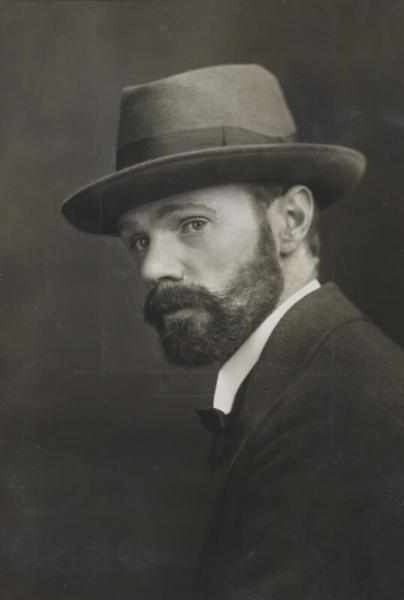"Art Nonsense": last words from the pen of DH Lawrence...

“Eric Gill's 'Art Nonsense'” was the last thing DH Lawrence wrote before he died of tuberculosis in the South of France on 2 March 1930 at the age of 44 – and what is most striking about it is his preoccupation with God.
Not that Lawrence's concept of God was in any sense orthodox, any more than Lawrence himself was. As a boy he had attended services and Sunday School at the Congregationalist chapel in Eastwood, the Nottinghamshire mining village where he grew up, an experience which stayed with him all his life, as he himself was the first to admit. He wrote a study of the Book of Revelation in his last years; he re-imagined Christ's Resurrection in The Man Who Died; and when he left Italy by train for Switzerland and France in 1928 with not long to live, he spent much of the journey singing the hymns he had learned in his youth.
Lawrence rejected Christian dogma and its “blood-soaked language of salvation” at the age of sixteen. But the language of the Bible stayed with him, and so evidently did the idea of the divine, albeit infused with Aztec and Etruscan ideas and symbols which he had absorbed in Mexico and Italy. “Primarily I am a passionately religious man and my novels must be written from the depths of my religious experience” he wrote from Italy to Edward Garnett, the critic and reader for Duckworths, in April 1914. He added: “That I must keep to, for I can only work like that”.
As the DH Lawrence scholar Catherine Brown has noted, Lawrence uses “Christian sacramental terms” in Lady Chatterley's Lover, a novel which “rediscovered an ancient form of Catholicism” which embraced the body and was “one reason for the Bishop of Woolwich's defence of the novel at its trial”. When he reached Bandol in the South of France in 1929 the man who had once said God was “an exhausted concept” now said he had changed his mind, and it was with God that he wanted to establish a “conscious relationship”.
As his condition worsened his health was examined by an English doctor who insisted Lawrence be moved to a sanatorium at Vence. It was here that he wrote his review of Gill's book, at the end of February 1930. Lawrence would not have known that Gill (1882-1940) was a sexual predator who had committed incest with his sisters and his teenage daughters, since this only became public knowledge in 1989 in Fiona MacCarthy's biography of Gill.
What he did know was that Gill had converted to Roman Catholicism shortly before the First World War (he was a lay member of the Dominican Order) and had worked inter alia on the stations of the Cross at Westminster Cathedral. His review is initially scornful in tone: Gill is a “crude and crass amateur” who sounds like “an uneducated workman arguing in a pub”. Lawrence is scathing about Gill's conversion to Roman Catholicism (Catholics “swallow the pill without looking at it, and call that Faith”.)
But then comes Gill's saving grace, his “great truth”, namely that man can only achieve freedom (or rather Freedom) when “what a man likes to do is to please God”. Can this be DH Lawrence speaking? Well yes: for God, as far as Lawrence is concerned at least, means being in touch with “the heart of all things”, a “state of absorption into the creative spirit”, a condition in which “we feel ourselves most truly alive”. The will of God is “the inrush of pure life to which we gladly yield ourselves”.
He was by now very weak: he had developed pleurisy as well as tuberculosis, and was given morphine. He did not want to go: he seized the wrist one of the women at his bedside, Maria Huxley, and said “Maria, Maria, don't let me die”. But Lawrence had made his peace: men who have not known a state of being with God, he wrote in his essay on Gill, “have missed life itself”. And on that note, just a few days later, he gave up the ghost.
READ "ERIC GILL'S 'ART NONSENSE'"
*
Subscribers to The Book Collector can read Richard Owen's article "The Jolly Roger: Lady Chatterley's Lover and it's pirated editions" from our Winter 2018 issue.
Feature Image: D.H. Lawrence, by Elliott & Fry, bromide press print, circa 1915, NPG x36138, © National Portrait Gallery, London
